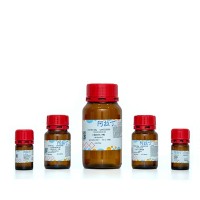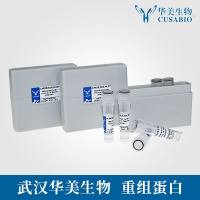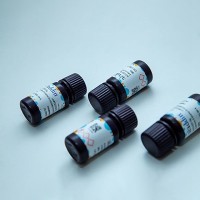核酸量快速计算方法 Calculating Amounts of Nucleic Acids
互联网
The "absorbance" of a chemical is a product of its (concentration) x (optical path length) x (extinction coefficient, E). Nucleic acids have a peak absorbance in the ultraviolet range at about 260 nm. When the spectrophotometer has a path length of 1 cm, absorbance = "optical density" (O.D.), and O.D. = E x concentration. Extinction coefficients vary with the type of nucleic acid. Double stranded DNA (dsDNA) has an E = 20 g-1 cm-1 L). Depending on the reference you read, the E for single stranded DNA (ssDNA) is 20 or 30 g-1 cm-1 L), while E for RNA is 25 g-1 cm-1 L).
Extinction coefficients can be used to estimate the concentration of a sample dissolved in a known aqueous volume, or to calculate the number of grams or moles of nucleic acid according to the following formulas:
Determining Concentrations:
1 A260 O.D. Unit for dsDNA = 50 µg/ml
1 A260 O.D. Unit for ssDNA = 33 or 50 µg/ml
1 A260 O.D. Unit for RNA = 40 µg/ml
Examples:
A 1:50 dilution of dsDNA gives an A260 = 0.063. [DNA] = 0.063x50/20 = 0.16 mg/ml. This is for a 1 cm path length. The path length of the 5 µl cuvette is only 0.5 mm = 1/20 cm. Therefore multiplication by 20 to give a 1 cm path length and then dividing by 20 for the extinction coefficient cancel each other. So for that cuvette, [DNA] = (A260 - A320 ) x dilution factor. The A320 is used to subtract absorbance due to particles in suspension in this small chamber.
Determining Moles:
For ssDNA oligonucleotides , an estimate of the number of moles can be obtained by using an approximate mw of 350 Daltons/nucleotide. Accordingly,
1 O.D. Unit ssDNA = 33 x 10-6 /(350 x length) moles = 94.3/length nmoles
An O.D. of 1.0 corresponds roughly to:
10-mer 10 nmoles
20-mer 5 nmoles
50-mer 2 nmoles
100-mer 1 nmole
Also, since 1 O.D. Unit = 33µg, then 1 µg = 2.86/length nmoles.
A precise estimate of the molecular weight of dephosphorylated oligos can be calculated using the formula:
mw = [(#A's x 312.2)+(#G's x 328.2)+(#C's x 288.2)+(#T's x 302.2) - 61.0]1
For phosphorylated oligos:
mw = [(#A's x 312.2)+(#G's x 328.2)+(#C's x 288.2)+(#T's x 302.2) + 17.0]1
For long (at least 30bp) dsDNA
approximate mw = 700 Daltons/base pair; mw of 1 kb is about 7x105 Daltons
(649 Daltons/bp is more accurate, but harder to remember)
# µg in a pmole = length x 700 g/mole x 10-12 moles/pmole x 106 µg/g
= length x (7 x 10-4 ) µg/pmole
Multiply pmoles by 2 for pmoles 5' ends for dsDNA.
ex: 1 kb DNA is about 0.7µg/pmole
1 µg of a 1 kb DNA = 1.52 pmol; 3.03 (pmol ends)
1 pmole of 1 kb DNA = 0.66 µg
MW RNA: length x 350 (341 is more accurate)
Other Useful Conversions for Oligonucleotides
Oligonucleotide length to molecular weight
350 x length = molecular weight
Mass to µmoles
µg / (350 x length) = µmoles
(µg x 106 ) / (350 x length) = pmoles
pMoles to µg
pmoles x length x 350 /106 = µg
µg to pmoles
µg x 106 /(length x 350)
MW of oligonucleotide pMoles 3' ends per microgram of DNA
10 x 106 0.05
1 x 106 0.50
0.1 x 106 5.0
0.01x 106 50.0
Melting Temperature Formulas (14-70 bases):
Tm = 81.5°C + 16.6(log[Na]) + 0.41(fraction G+C) - 600/L
where
Na = [monovalent cations] usually 50-60 mM
L = primer length
fraction G+C = G+C content of primer
Also, Tm (approx) = 4°C x(fraction G+C) + 2°C x(fraction A+T)
Oligonucleotide Stock Concentrations for Amplifications:2
mls to dissolve oligo = Total ODs (or A260) / (E x molar concentration needed)
Count the numbers of each base in the oligo. Compute E
= [#A's x (16,000)] + [#G's x (12,000)] + [#C's x (7,000)] + [#T's x (9,600)] + [#I's x (12,000)]
Make your oligonucleotide solution more concentrated than needed so that when you add it to a working solution, the final concentration will be correct.
Ex: 18-mer with 2(A) + 6(G) + 8(C) + 2(T).
E = 2(16,000) + 6(12,000) + 8(7,000) + 2(9,600) = 179,200
Total ODs in tube = 11
Concentrations needed = 5x10-4 = 0.5 mM
mls needed to dissolve = 11/(179,600 x 5x10-4 ) = 0.123 ml
Citations:
1. Genosys Corp.
2. Oligo, Etc catalog, p.14
来自Lab of Dr. Mark Barton Frank, Oklahoma Medical Research Foundation
http://omrf.ouhsc.edu/~frank/DNAMOLE.html
上一篇:遗传密码子 The Genetic Code 下一篇:常用化学试剂分子量 Molecular Weights of Commonly Used Chemicals







